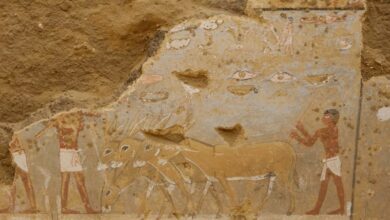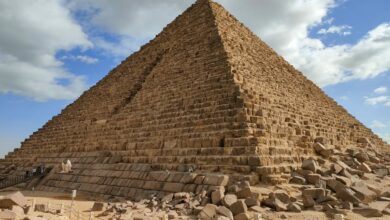
A scientific report has unveiled a new discovery that has shed light on the practice of the mummification of animals in ancient Egypt, through analyzing the discovery of several crocodile mummies in Aswan.
The report, published in the journal “Popular Science”, noted that even large and fearsome predators such as Nile River crocodiles that can weigh up to 16,500 pounds were revered enough to be buried in tombs.
While there are several hundred mummified crocodiles available in museum collections around the world, they are not often thoroughly examined.
The team of researchers from institutions in Belgium and Spain found that the crocodiles were mummified in a unique way at the Qubbet al-Hawa shrine (Dome of the Wind) burial site in Aswan, Egypt, during the fifth century BC.
The team looked at both the morphology and preservation of 10 crocodile mummies that measured between five and 11 feet in length.
The specimens were found during excavations in 2018 in rock-cut tombs at Qubbet al-Hawa along the west bank of the Nile River, and the mummies included five partial skeletons and isolated skulls.
“The crocodiles are an extraordinary find,” study co-author Bea De Cupere from the Royal Belgian Institute of Natural Sciences, tells PopSci. “Although I am an archeozoologist and used to work with animal bones, the crocodile skulls were very impressive, and I am very happy to have got the opportunity to study these crocodile remains.”
The ancient Egyptians had a unique way of mummifying crocodiles, so the team believes that the mummies are namely West African crocodiles and Nile crocodiles, according to their shape.
They also found that the method of preservation was different from those used on mummies found at other sites, and there was no evidence that resin was used to seal holes in the bodies or that evisceration (removal of internal organs) was part of the mummification process.
“It is assumed that the animals were first, elsewhere, laid on the surface or buried in a sandy environment that allowed the bodies to dry out naturally. Most likely the intestines were thus not removed,” De Cupere explains.
This preservation style suggests it occurred during the pre-Ptolemaic age, or before the reign of Egypt’s Ptolemy Dynasty, the dynasty that included Cleopatra VII. This style is consistent with the final phase of funeral practices used during the fifth Century BCE, according to the team.




